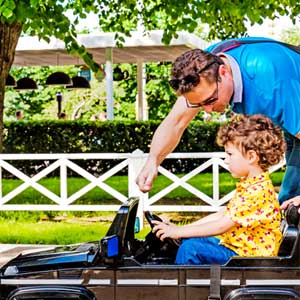Kids’ ride-on cars are the perfect toy to get children active, and the right wheels can make all the difference to safety, performance, and overall fun. In this article, we’ll look at some of the best wheels available to explore indoors and outdoors and the key factors to consider.
These cars can be driven both indoors and outdoors, but picking the wrong wheels for the toy’s size and power and your child’s age can lead to poor traction and, ultimately, a bad driving experience.
What’s in this guide
- What types of kid’s ride-on car wheels are available?
- How to maintain the wheels on a kid’s ride-on car
- Why wheels are essential to your child’s driving experience
- Can childrens cars be driven indoors?
- Can kid’s cars be driven outside?
- Can kid’s ride on cars be driven on grass?
- How to change the wheels on a child’s ride-on car
- How to put rubber tyres on a power wheels
- Does your ride on car wheels diameter effect speed?
- What are EVA wheels?
- Most ride-on kid’s cars can be driven indoors.
- Kids ride on cars can be driven outside, however we would recommend fitting the car with EVA rubber wheels.
- Kids’ ride on cars can be driven on grass, but it’s essential to ensure the grass is short and well-maintained.
- The size of the wheel does effect its top speed and acceleration, as is the case with real life cars.
- EVA wheels are soft rubber shock absorbing wheels made from Ethylene-Vinyl Acetate that do not require inflation.
What Types of Kid’s Ride-On Car Wheels are Available?
Children’s ride-on cars are generally sold with one of three wheel types: hard plastic wheels, inflated rubber tyres and EVA rubber wheels.
Here’s a rundown of each:
Rigid plastic wheels are the most affordable type and provide excellent traction for push along, 6v and 12v cars on flat surfaces. However, larger vehicles may struggle and slip on wet and steep terrain.
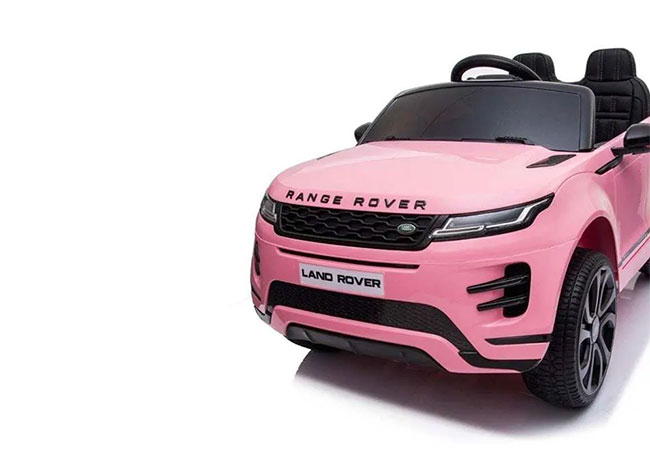
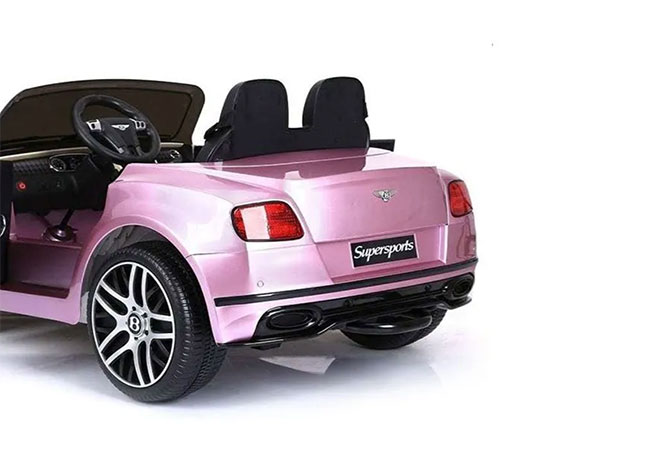
Inflatable rubber tyres usually come with an inner tube filled with pressurised air. They are found on ride-on quad bikes and other off-road vehicles, providing the same comfortable ride and grip as real car tyres. One negative aspect of inflatable tyres is that they can suffer punctures, so ensure you have a pump and puncture repair kit to hand.
EVA wheels are made from ethylene-vinyl acetate rubber and are considered the most advanced on the market. These wheels provide the same level of comfort as air-filled tyres without you having to worry about air pressure and punctures.
A copolymerisation reaction between vinyl acetate and ethylene produces the foam used in EVA wheels. This material is highly durable, UV and water-resistant and can resist cracking under stress. They’re also super soft, making for a quieter ride that won’t disturb your neighbours. EVA wheels are a must-have for larger, faster, 24v ride-on vehicles.
How to Maintain the Wheels on a Kid’s Ride-On Car
Here are some suggestions for maintaining the wheels on your child’s car, providing a fun and safe driving experience:
- Rigid plastic wheels can easily chip on hard outdoor surfaces such as gravel. Make sure you check them regularly for wear and tear. If you notice any damage, it’s time to replace the wheels.
- If your child has a car with inflatable tyres, check the tyre pressure regularly to ensure they are properly inflated. Incorrectly inflated tyres wear out quickly, creating a poor driving experience.
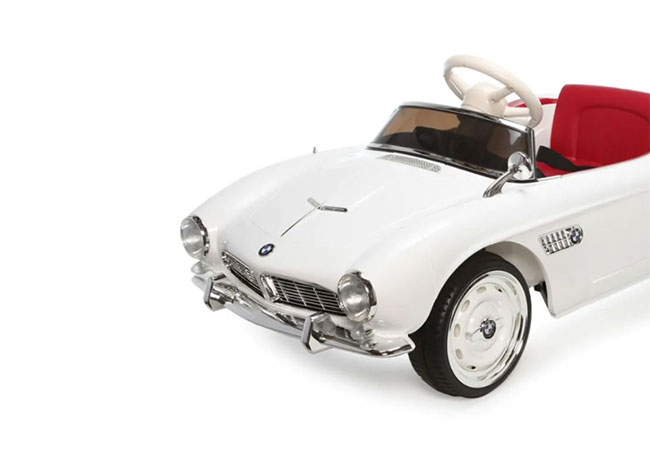
- For toys with EVA rubber tyres, store the car in a dry, cool place to prevent the rubber from deteriorating due to exposure to sunlight or heat.
- Clean the wheels regularly to remove dirt and debris that can cause wear.
Why Wheels are Essential to your Child’s Driving Experience
A ride-on car’s performance depends on battery voltage, motor wattage and car size. However, as with grown-up vehicles, all these things mean nothing if the wheels aren’t suitable.
Tyres are the point of contact with the driving surface, affecting the entire riding experience, from steering and braking to acceleration and shock absorption. If your car has the wrong wheels, this can lead to your child’s electric car performing poorly and an unsafe driving experience.
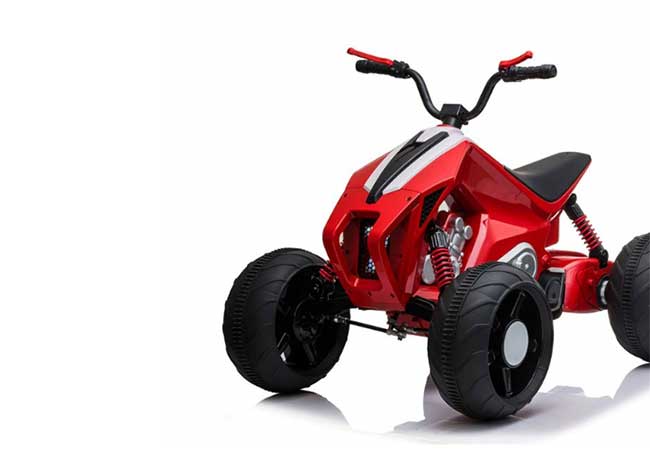
Can Childrens Cars be Driven Indoors?
Most ride-on kid’s cars are sold with standard plastic tyres. These rigid wheels are perfect for driving on flat indoor surfaces, providing the appropriate traction for most 6v and 12v vehicles.
EVA foam tyres also provide a smooth ride on level terrains. However, these wheels’ capabilities far exceed the confines of an average home.
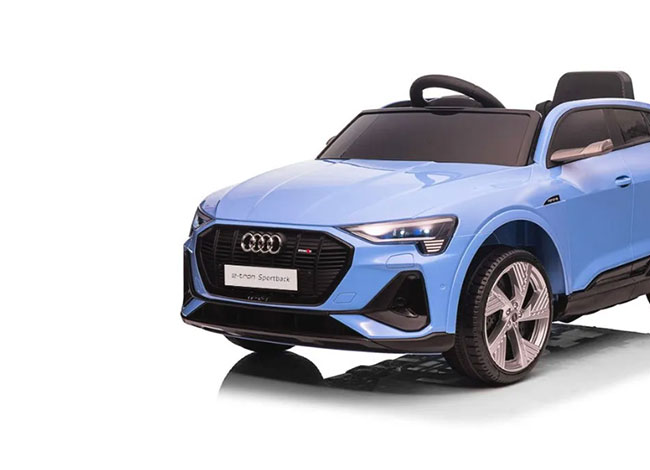
Can Kids Cars be Driven Outside?
Yes, kids ride-on cars can be operated outside, however we would suggest the vehicle is equipped with EVA rubber wheels, as these wheels are the most suitable for driving outdoors. These wheels provide plenty of traction, allowing them to operate on wet terrains and offer extra stability over steep hills and concrete.
While hard standard plastic tyres can handle flat, dry outside environments, be mindful that they will start to slip if used on inclines or during wet weather.
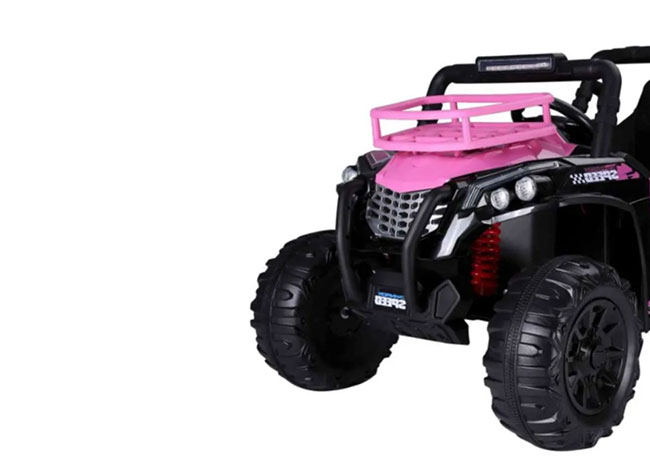
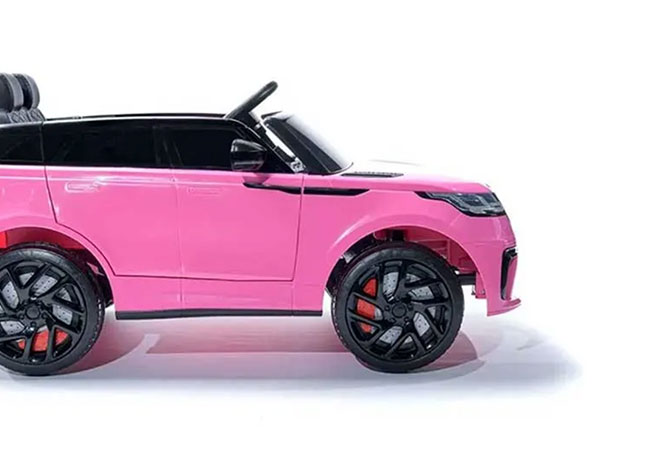
Can Kid’s Ride On Cars Be Driven on Grass?
Taking your new toy on an off-road adventure? Your little racing driver will inevitably need to navigate the green grass of the UK.
Kids’ ride on cars can be driven on grass, but it’s essential parents ensure the grass is short and well-maintained. The best power wheels for grass should be equipped with appropriate tyres, such as EVA rubber, because rigid plastic wheels may perform poorly on grass.
How to Change the Wheels on a Child’s Ride-On Car
It’s surprisingly easy to change the wheels of your child’s electric car. The first step is to ensure your new wheels connect to the vehicle with the same mechanism.
There are three types of connections: a push-and-pull clip, split pin or a conventional bolt-on. Providing these match, you should be able to remove the old wheels and attach the new ones.
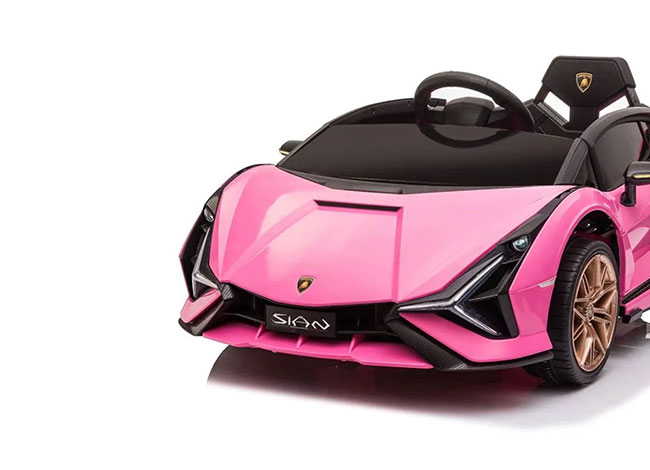
How to Put Rubber Tyres on a Power Wheels
If you are looking to give your Power Wheels more traction for better handling and acceleration, you can do so with a simple mountain bike tyre. To do this, you should wrap the wheel with the mountain bike tyre and then screw short truss-head screws every four to five inches around the wheel’s circumference.

Does your ride on car wheels diameter effect speed?
Your kids car’s wheel size does effect its top speed and acceleration, as is the case with real life cars. Larger ride on wheels offer better traction and handling, but make for slower acceleration as the wheels consume more power to complete a full revolution. On the other hand side, larger wheels produce a higher top speed.
What are EVA Wheels?
EVA wheels are soft rubber shock absorbing wheels made from Ethylene-Vinyl Acetate that do not require inflation. EVA wheels are made from a foam rubber compound, providing a unique combination of softness, flexibility, and durability. The core of an EVA wheel is typically dense EVA foam with a rubbery feel and quality, offering a comfortable and smooth ride for kids cars.
EVA wheels are puncture-proof and do not require inflation. They are also lightweight, which contributes to the ease of manoeuvring and handling of your child’s ride on toy.
EVA wheels are particularly suited for smooth surfaces and are known for their quiet operation. They provide lots of traction while maintaining a smooth ride, which is especially beneficial for young drivers. Keep in mind, that, while EVA tyres are durable and hard-wearing, they may not offer the same level of traction and shock absorption as air-filled tyres, particularly on rough or outdoor terrain.
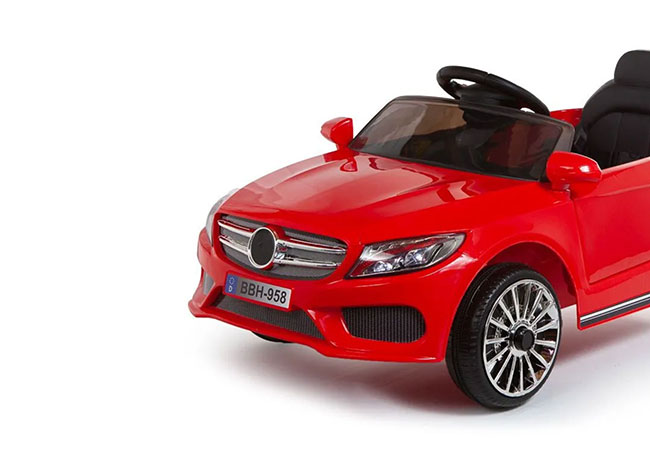
Conclusion
Rigid plastic wheels, which are sold with most vehicles, are suitable for indoor driving or outside on flat dry surfaces. They are prone to chip, so ensure you regularly check the wheel for damage.
EVA rubber tyres add extra traction to your kid’s car, maximising their driving fun indoors and outdoors on steep terrains or in wet weather conditions. Ensure you store these wheels inside to protect the rubber from extreme heat or cold.
About the Author
Hannah Hill
Entrepreneur, and mother of three. Hannah is a toy expert with 20+ years in the online toy industry, founding the Kidaroos website that sells 10,000+ toys per year. Hannah is always looking for new, innovative ways to keep everyone's kids active and energised in a world full of screens and social media and has been featured in publications such as Authority Magazine.


















